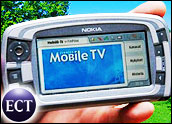
For millions of consumers, the wireless home is not just an ideal — it is an actuality. According to a new research report, based on interviews with 2,000 Internet users, approximately 20 percent of broadband users in the U.S. and in Europe are now sharing their online connection with PCs, TVs and other electronic devices. They are using wireless fidelity (WiFi) to wirelessly network their homes, the new report, “Home Network Adoption: WiFi Emerges As Mass Market Phenomenon,” by the Boston-based research firm, Strategy Analytics, indicates.
“WiFi has become the preferred networking technology for affluent early adopters,” said David Mercer, a lead analyst at Strategy Analytics.
US Leads the Way
The report indicates that seven percent of all households now have a wireless network. The U.S. is the “leading market” with 8.4 percent penetration, followed by the Scandanavian region with 7.9 percent. Interestingly, WiFi usage in the UK — at 6.1 percent — and Germany — at 5.1 percent — is below the global average. What is more, the survey discovered that consumers in the highest income groups were three times more likely to use WiFi than those in the least affluent.
The survey of users was conducted in eight countries — including the U.S., France, Germany, UK, Denmark, Finland, Norway and Sweden, and contained demographic and psycho-graphic questions. It also asked questions connected to ownership of digital consumer electronics devices, usage of broadband services and interest in budding applications such as online media.”Rising ownership of laptop PCs and other portable Internet devices will make WiFi the dominant home networking choice,” said the survey.
This is driving the development, and sale, of new integrated circuits and other technologies.
“Our recent research indicates that in 2007, driven by the adoption of the 802.11n standard, WiFi chipsets will be widely used by consumer electronics manufacturers for products such as HDTV displays and DVRs,” said Philip Solis, senior analyst at ABI Research. “We expect the number of WiFi ICs sold into consumer electronics to grow from 6.6 million units in 2004 to over 70 million units in 2007.”
This past week, at the “Wireless Event” trade show in London, an array of new technologies for the wireless home network debuted.
One company, based in Israel, Metalink, a provider of high-performance wireless and wireline broadband communication silicon solutions, demonstrated its WLANPlus chipset, a technology based on the emerging 802.11n standard, with for wireless, multimedia distribution.
The demonstrations featured the delivery of high-definition television (HDTV) over wireless LAN, at wireline quality, using Metalink’s WLANPlus technology. WLANPlus is an advanced Wireless Local Area Networking (WLAN) technology, designed to enable high-throughput, rich-content, quality-critical applications. This solution is positioned as a high-throughput wireless interface for various consumer electronics products such as residential gateways, DTV, HDTV, set-top boxes, media adaptors and Digital Video Recorders (DVR).
Drowning in Media
As a result of all this convergence, a tremendous amount of media content had been made available to consumers in recent months, helping to increase the reliance on technology that automatically filters choices so consumers can find what they want.
Major entertainment and media companies have announced a number of partnerships with online outlets and services, resulting in thousands of hours of sports, music videos, movies, news and other programs becoming available via the Internet. Companies like Yahoo, Google and Comcast are making huge bets that personalization technologies will provide consumers the content they desire.
This is expected to help unleash the next generation of the Internet, dubbed “Web 2.0,” and to shape the Internet into an increasingly consumer-focused service.























































Social Media
See all Social Media